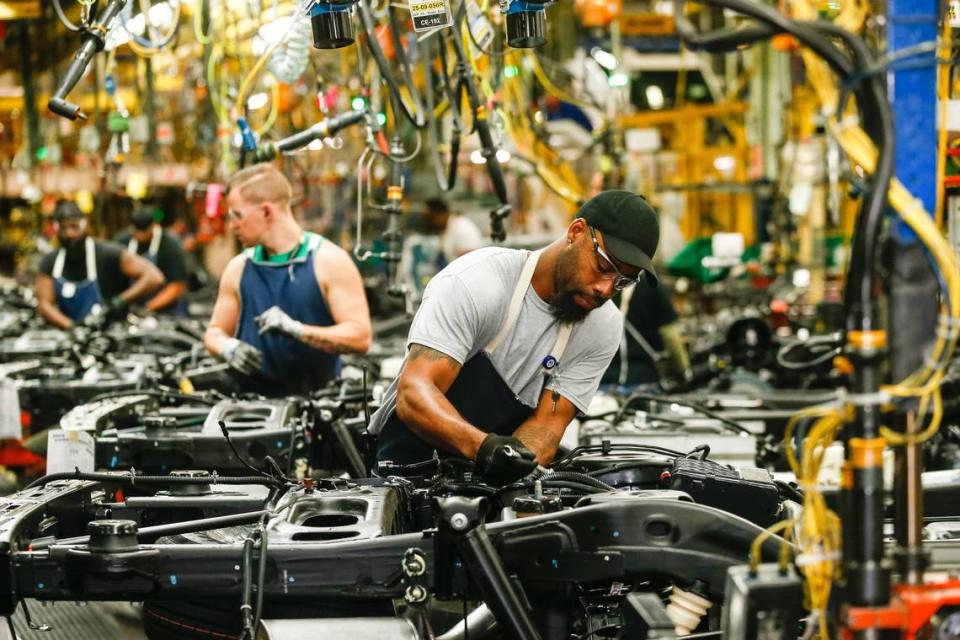United Auto Workers went on strike Friday. What will happen at GM’s Arlington plant?
Car manufacturing workers walked off the job Friday morning at the Big Three automakers — Ford, General Motors and Stellantis — after a United Auto Workers strike was announced Thursday evening.
But the 5,600 workers at the General Motors Arlington Assembly plant were not among the group.
A Missouri GM assembly plant, Michigan Ford assembly plant and Ohio Stellantis assembly plant were the first strike targets after UAW’s contract expired Thursday night.
Contract talks between UAW and the “Big Three” manufacturers over the past few months have revolved around cost-of-living adjustments and inflation, the role and use of temporary manufacturing workers, the industry’s shift from pensions to 401(k) retirement plans and a tiered wage system. The union demanded a 40% pay increase as of early August.

While Arlington workers will continue North Texas operations for now, there is a chance they could be asked to strike in the near future, depending on how contract negotiations continue.
This is the first time the union has targeted all of the Big Three manufacturers in one strike. Previously, UAW would target one company and call for a strike at all of the company’s plants.
This most recently happened to General Motors when workers went on strike for 42 days in 2019. Economists say the strike led to a $4.2 billion economic loss and sent the state of Michigan — where General Motors is based — into a one-quarter recession.
Economists also say a 2023 strike of only 10 full days could lead to a total economic loss of $5.6 billion, according to a report from Michigan-based Anderson Economic Group.
“Our goal is not to strike,” said UAW president Shawn Fain during a Facebook Live in August when 97% of union members voted to authorize a strike. “I want to make that very clear. Our goal is to bargain good agreements for our members. But all we’ve tried to do with this is prepare everybody in the event that we have to take action to get a fair and just contract.”
More than 12,700 workers walked out as part of the initial strike.
“This is more of a symbolic strike than an actual damaging one,” Sam Fiorani, a production forecaster at Auto Forecast Solutions, told Reuters. “If the negotiations don’t go in a direction that Fain thinks is positive, we can fully expect a larger strike coming in a week or two.”
UAW currently has an $825 million strike fund. Full-time employees at the Big Three make on average $18 to $32 an hour, depending on seniority, according to The Washington Post.
“The Big Three is our strike target. And whether or not there’s a strike — it’s up to Ford, General Motors and Stellantis, because they know what our priorities are. We’ve been clear,” Fain previously said.
The North Texas General Motors facility has significantly contributed to Arlington’s economy since the plant opened in the 1950s. General Motors announced a $500 million investment in June for the plant to maintain existing jobs as it gears up for the next cycle of SUV production.
General Motors Assembly in Arlington rolled out more than 34,000 new vehicles in March, setting a 70-year record for North Texas car production.
UAW has more than 600 local unions and 400,000 active members across the U.S., Canada and Puerto Rico, according to the union’s website. It also has more than 1,700 contracts with more than 1,000 employers.


